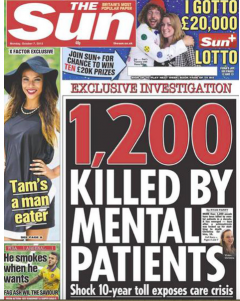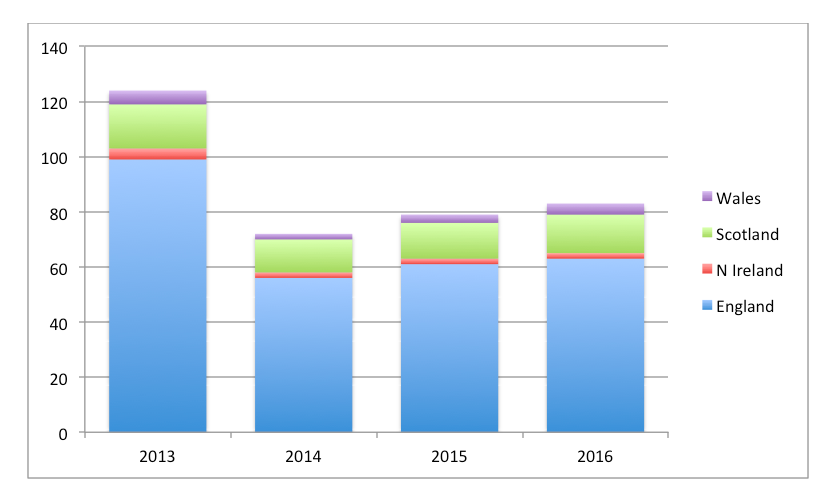How do you count victims of mental health homicides?
In 2013, the National Confidential Inquiry into Suicide and Homicide by people with Mental Illness (NCISH) for the first time published figures about the number of victims of mental health homicides in the United Kingdom.
They revealed, after documenting the figures over the previous decade, that on average 122 people are killed in Britain each year by mental health patients and those with mental illness at the time of the offence,
 As a result of the revelation, the Sun newspaper published what was to become a much criticised front page – “1200 Killed By Mental Patients”.
As a result of the revelation, the Sun newspaper published what was to become a much criticised front page – “1200 Killed By Mental Patients”.
 But in fact the Sun headline was actually only inaccurate because it attributed the figure solely to killings by patients, and ignored those perpetrators who were not patients but who were still deemed mentally ill at the time of the offence.
But in fact the Sun headline was actually only inaccurate because it attributed the figure solely to killings by patients, and ignored those perpetrators who were not patients but who were still deemed mentally ill at the time of the offence.
But ever since 2013, and the Sun headline, the figures NCISH have subsequently published for victims of mental health homicides are curiously different.
And they appear to show a massive decline in the numbers of victims – by some 42% between 2013 and 2014.
 But there hasn’t actually been a massive decline in victims of mental health homicides – the only change has been in the way NCISH counts them.
But there hasn’t actually been a massive decline in victims of mental health homicides – the only change has been in the way NCISH counts them.
(Some uncharitable people might say they’ve moved the goalposts).
Because now they just count victims of patients on the books of mental health trusts and ignore the victims of those who were considered mentally ill at the time of the offence, who had been included previously.
(And given the difficulties some people have in accessing effective long-term care, this is probably a significant number of people).
We know that the numbers of mental health homicides aren’t declining – they are going up.
And NCISH’s own figures show a steady rise in victims of patient homicides since 2014 – of some 15% – at a time when homicides in the general population are declining.
I don’t actually mind which method NCISH uses for counting victims, but I reckon they should at least be up front with the public about changes in their methodology, particularly when their partial accounting is often taken as the total figure for mental health homicides by the national media.
It’s difficult to understand who actually benefits from minimising the actual numbers by 42%?
Our view is that minimising the scale of the problem does not help learning in mental health services. It helps promote the view, against all the evidence, that homicides by people with mental illness are so rare that there is little mental health services can do to prevent them.
Minimising the problem does not help patients. It does not help their families, and it certainly does not help to keep the public safe.
